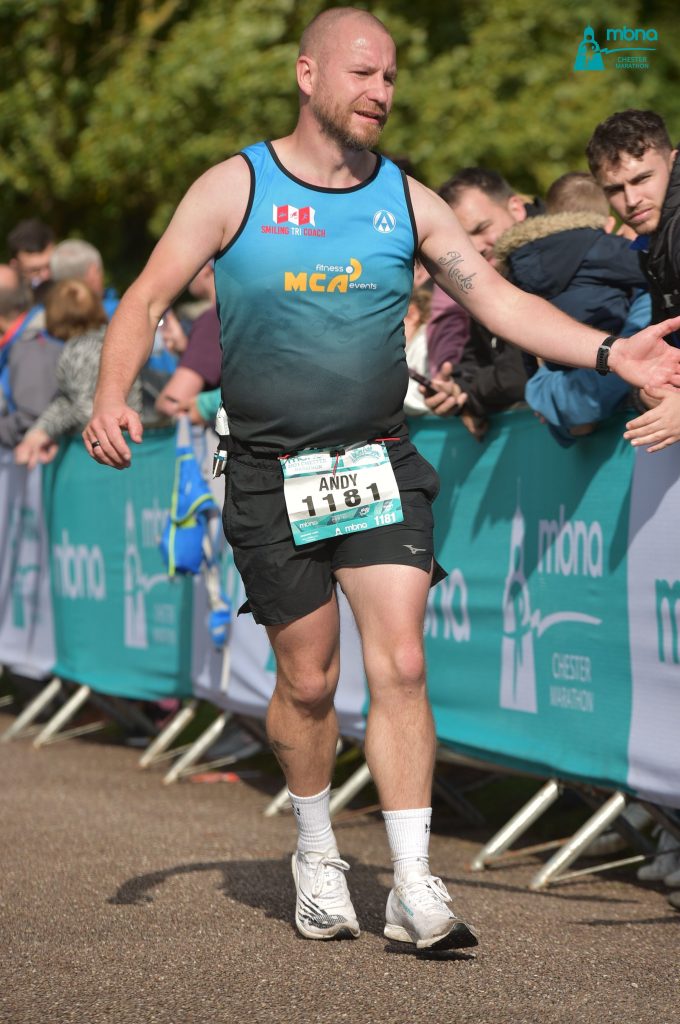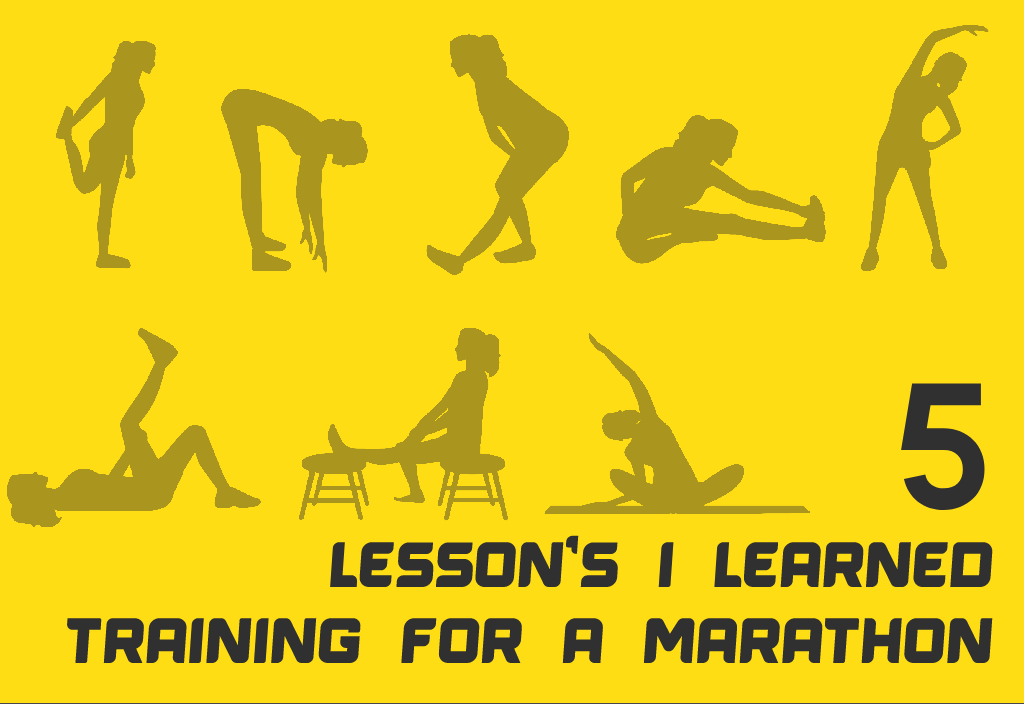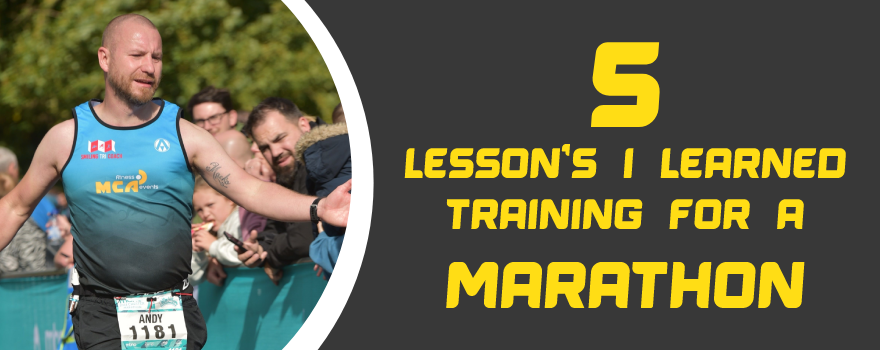
How do you know if someone’s ran a marathon? – Don’t worry they’ll tell you!!
Did I tell you I ran a marathon last year? Lol. I say I ran a marathon, there was a lot of walking, some time stopped, there were nearly some tears and a lot of self-talk, both negative, self-coaching and positive reinforcement.
The 5 hours and twenty minutes I spent on the Chester Marathon course was one hell of a journey and it wasn’t the euphoric buzz of completion I expected, in fact, I now feel 6 months on that I have unfinished business and I’m contemplating another…
Race day is supposed to be the culmination of all the hard work, its supposed to be nervous to start, but then fun, relaxed and almost easy until the sprint for the finish, after which you can celebrate with your loved ones and a cold beer. For me, there were no real nerves, in fact, none of the above applied. It was harder than the 16 weeks training I had (or hadn’t) done, there was relief not ecstasy as I crossed the line, and my point was a consolation one not a celebration.
Don’t get me wrong, I am proud to say I’ve done this distance, I got the medal, and I didn’t give up, however other than micky taking marathon runners a little bit, I haven’t really spoken about my experience.
Well, here it is folks, my 26.2 miles, my 16 weeks as a Smiling Tri athlete (I’m still an honorary one 😉) and my 5:19:51 in 5 key takeaways (1 for every hour)
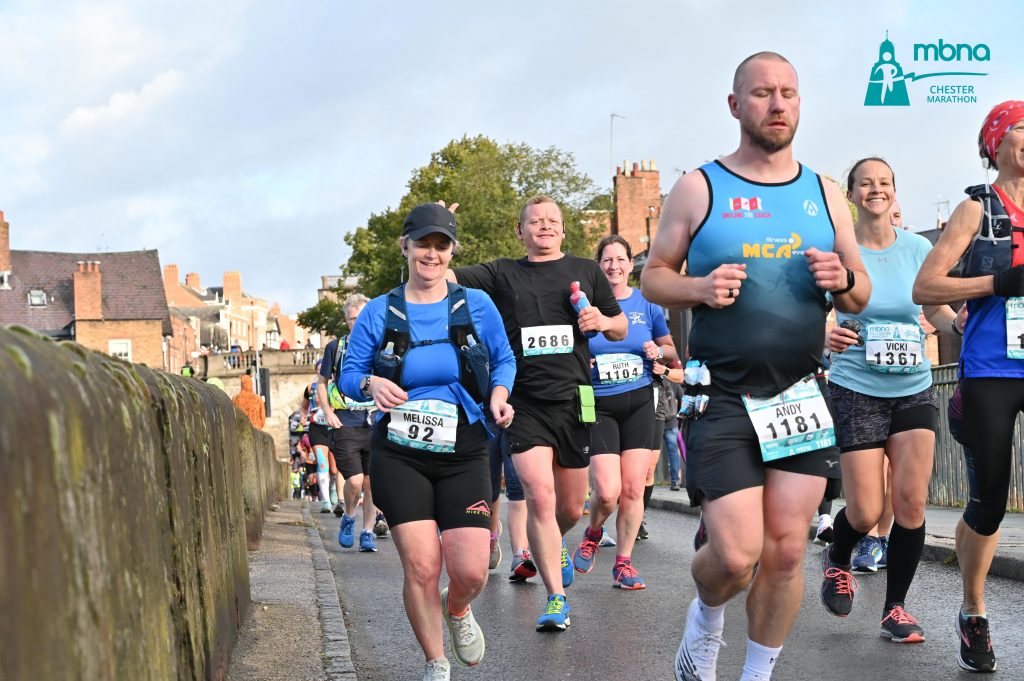
Get your miles in
The first and probably most important. A marathon is a long way, you’re on your feet the whole time and (hopefully) you’ll be running the whole way. You’ll be running anywhere between 2 (pfft) and 6 hours really, with the “industry standard” cracking time is around 4 hours.
The advice here is to ensure you get plenty of running in every week and prioritise your long runs. Now I’m not saying to run 10 miles every day, in fact, I wouldn’t target miles at all really… id try to focus on time. You know you’re going to have to run 26.2 miles but more importantly, you know it’s going to take you a long time, so it’s important to get your legs used to it.
I would say, assuming you’re already a runner, training between 2 and 4 times a week for 3-4 hours is a decent place to start. 2 or 3 30 – 45-minute runs and maybe a longer 60-70 minute run too. At this stage, were not going crazy, and were looking at comfortable 5 – 10km runs. You’re then going to increase the time of your long runs every week or 2 and probably increase the frequency of your runs to also up your weekly distance. 4 – 5 runs a week is all that is needed, but you can easily increase your weekly miles by going from 3 runs to 4 by adding an easy 60-minute run. Easy being the optimum word (more on that in point 2).
With regards the time you increase your long runs, you’ve probably got 12 to 16 weeks to train, and you’ll be looking to get your longest run up to around 3-3 ½ hours, so from 60 minutes, you can add on around 10 – 15 minutes a week and include 3-4 deload or recover weeks too. Now you might have spotted that we haven’t got to 4 hours, or even 5 or 6, but this is where the rest of your week comes in. A second long(ish) run is a useful accessory, 75 – 120 minutes halfway through the week, provides additional hours on the legs, and if timed correctly, your second long(ish) run will help your ability to perform on tired legs and recover from long runs.
To summarise, I didn’t do enough running when training for my marathon, my long runs were skipped due to time for work and family commitments, and I focussed on my long(ish) and shorter runs. This left me struggling after a couple of hours on the legs on race day.
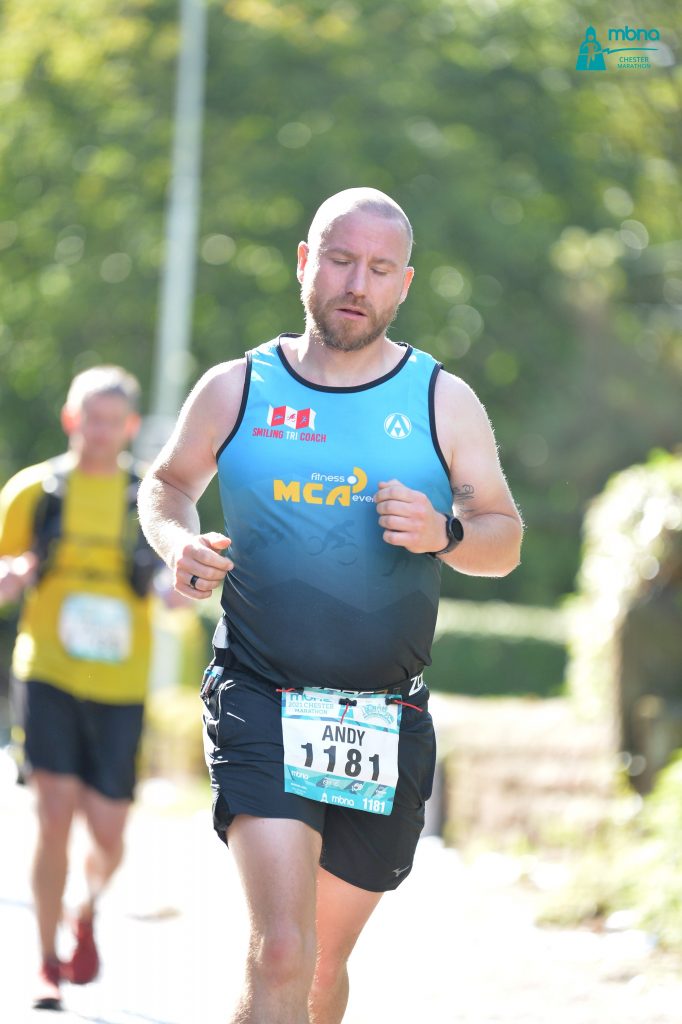
Practise your hydration
If you’re training for a sprint marathon, you’ll be training through the winter for what will hopefully be a pleasant day running and if you’re aiming for an Autumn marathon, then you’ll be training over the summer. Now as important as it is to fuel and hydrate for your training, you also have to bear in mind race conditions. I would go as far as to say you cannot over train for nutrition and particularly for hydration. And again, your long runs become important here, as if you haven’t run for more than 2 or 2 ½ hours you’re in no man’s land when it comes to fuelling…
I learned my lesson here. I “raced” in October on what I expected to be a cold, probably wet, day. It was cold but lovely. Too warm, to not hydrate at each aid station and that coupled with the 750ml electrolytes and 2 coffees I had pre-race, lets just say it wasn’t only my legs that got a workout… I hadn’t trained to run on so much fluid and with picking up a bottle of water at each aid station, I also had to stop to relieve myself at each aid station. If I had committed to my long runs I’d have both trained my legs and my bladder, particularly training through the summer, I’d have drank more and have more experience running while consuming plenty of fluid.
It goes without saying you need to fuel correctly, but for me, my lesson was to drink more, so I didn’t need to drink less on race day.
Use all the zones
Training Zones – a brief summary
- Zone 1, doing nothing to a gentle walk 2/10
- Zone 2, easy jog/fast walk, fully conversational 4/10
- Zone 3, conversation slipping to phrases 5.5/10
- Zone 4, Threshold – you’re definitely working out now 7/10
- Zone 5, 5–10-minute intervals, you’ll need roughly the same recovery between sets. And now you’re grunting, not talking 8/10
- Zone 6, Sprints up to about 60 seconds and far more recovery… 9/10
Zones can be recorded by heart rate or power, but for the sake of this article, we’ll talk about RPE or rate of perceived exertion. In other words, if 1 is sleeping and 10 is all out effort, how hard do you feel you’re working?
You’re going to be running your marathon in mostly zone 2. You’ll be able to hold a conversation for most of your effort however you’ll occasionally hit zones 3 and 4 particularly if you hit a hill and you want to avoid zones 5 and 6 as you’ll likely need to walk to recover.
That’s race day though and during training you’re going to want to utilise them all! Longer runs (90 minutes plus) at Zone 2, 60 – 90-minute efforts will be using Zone 3, running at Tempo. You may run the odd Time Trial type effort, 30 – 60 minutes at Zone 4, nailing a 5 – 7km effort maybe. Then comes your Zone 5 and 6 efforts when you’re doing fast, hard repeats and working (including recovery) for maybe 45-60 minutes in a 90-minute session.
The emphasis for completing the event will be on your zone 2 runs and getting the hours in on your legs, for those who can nail the long runs and are looking for some speed on race day too, make sure you train through all your zones.
My lesson was to ensure I did all that was needed. I avoided long runs due to time and ended up topping out at 2 hours. Nowhere near long enough. I managed to get my shorter sessions in and maybe would have been better suited to a half marathon with the time I had, but honestly, my output in training didn’t work for either.

Time your training
Your marathon will start at probably 9am on a Sunday morning. That means you should try and get your long runs in at a similar time. You will know what you’re in for, you can prepare both mentally and physically. This is the important run to get in at a similar time to race time. If you do all your training at 7pm and never train in the morning, you will be in for a shock come race day.
For me, my body does not want to move early doors, I wake up stiff and fatigued, so getting in some early runs including warms ups and mobility work, was a game changer. Even if my runs were only 90 minutes, it was at the right time. I could fuel appropriately, and I knew what I was expecting come race day.
I still worked full time and dealt with life and family admin, so a lot of my runs were evening based, but where I could I took advantage of a Saturday morning football match by running for the first half then watch Barney in the second, I snuck out before breakfast for a few miles o a Sunday but came home with coffee and cakes (to keep me out of trouble 😉)
I saved my zone 5 and 6 efforts for the evening after which I could refuel and sleep to optimise recovery.
Train Hard, Race Easy
Honestly, the most important lesson I learned from my marathon experience was to put the effort in in the 16 weeks before it.
I had only planned to run 1 marathon and retrospectively, I wish I had sacrificed more in that time. I should have got up earlier on a weekend morning to be out and back before breakfast (or lunch), I should have used my commute to work to get extra easy miles in, I should have sacrificed Friday night takeaways for early nights and nutrient dense food. I had 16 weeks, or 64 runs to prepare for my marathon. Everything I didn’t do in that time would have made my experience on marathon day much more pleasant and I may have crossed the line buzzing instead of defeated.
As I write this blog, there are 26 weeks until Chester Marathon 2022 and I’ll be honest, I’m very tempted to finish that business.
One of my favourite things about success is that it’s the journey that makes it, it’s the process that should be enjoyed and revelled in. Race day should complete with a box ticked as part of said process. I don’t feel like I ticked that box, I wasn’t left with a “what next” feeling.
I hope you take something from the lessons I learned. I hope you can use my mistakes to help you succeed at your first or next marathon, Ironman or whatever event your fitness journey takes you to next.
*Checks google for entry link to another marathon…
